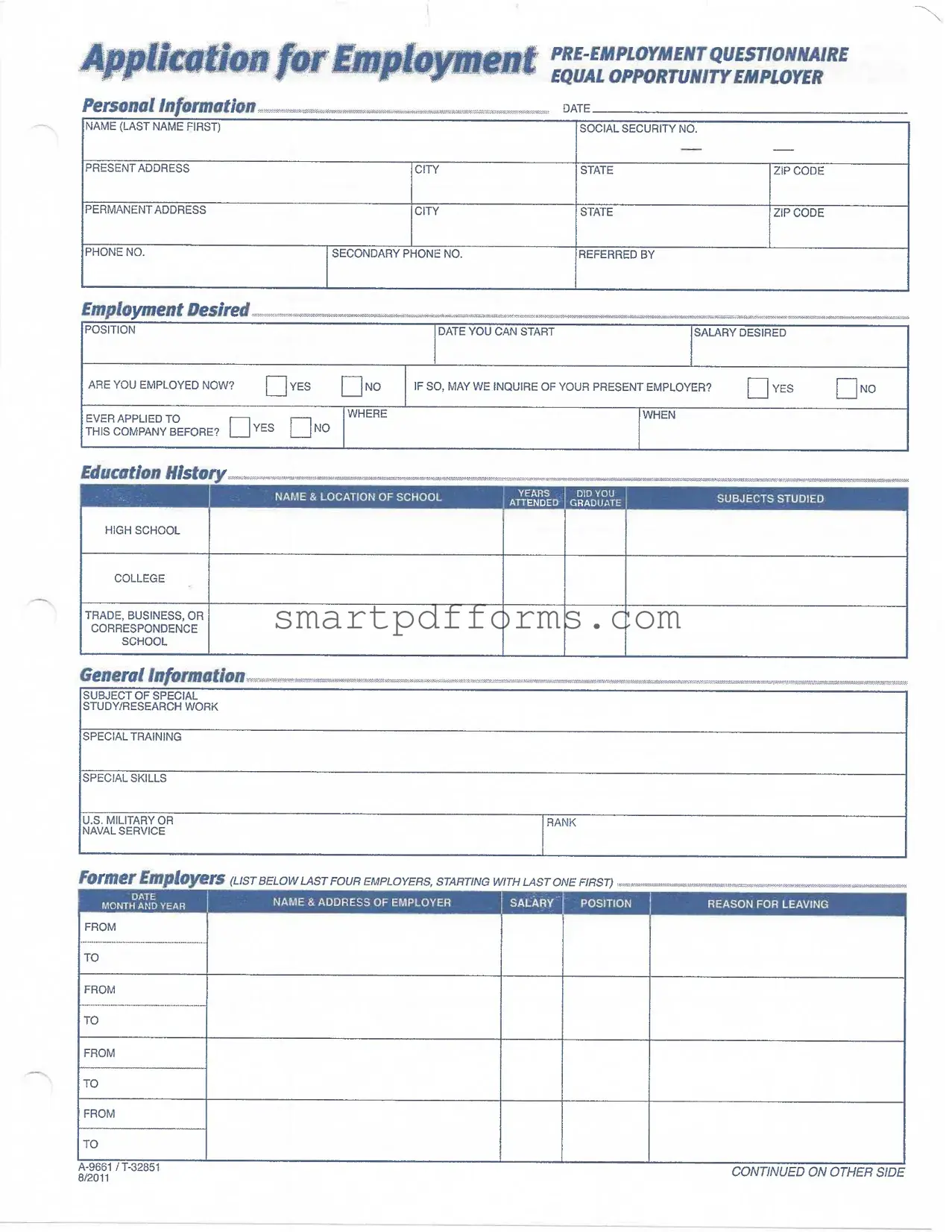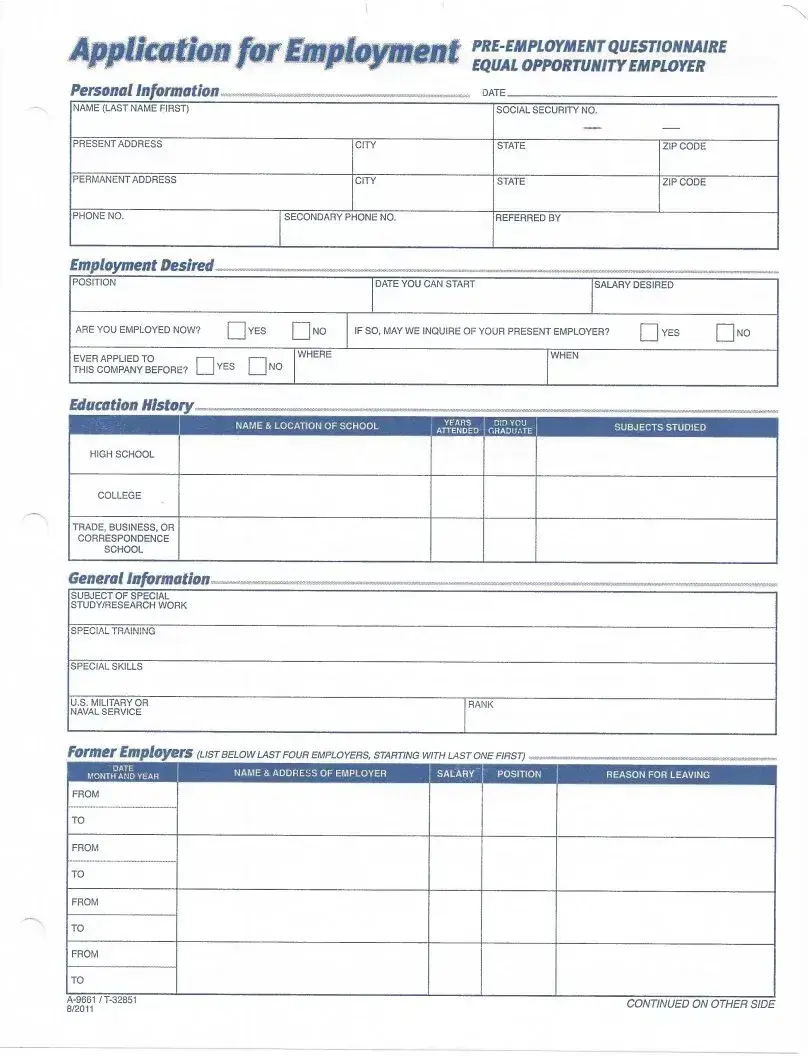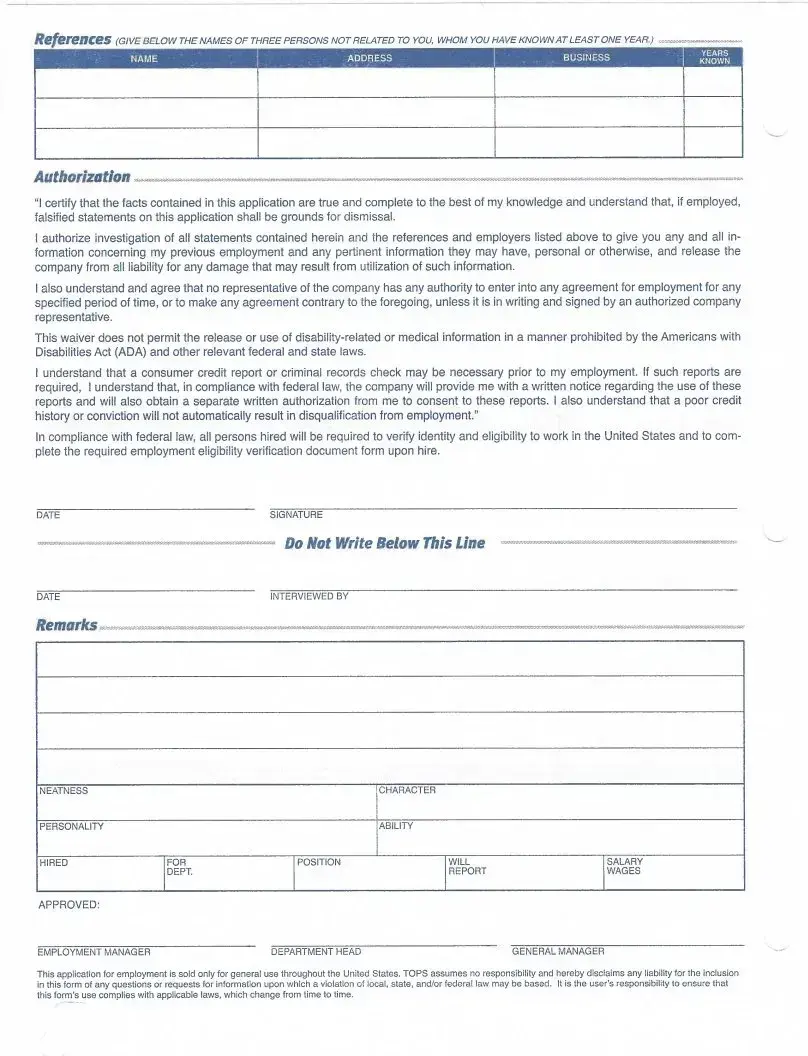In the intricate process of job applications, the A 9661 Application form serves as a crucial link between potential employers and applicants, embodying the ethos of equal opportunity employment. Designed to gather comprehensive information, this form spans a range of categories including personal data, employment history, educational background, and specialized skills or training, while also extending into areas such as military service. It prompts applicants to disclose if they are currently employed, their availability to start in a new role, and desired salary, alongside whether they have previously applied to the company. The education history section delves into the schools attended, degrees (if any), and subjects studied, preparing the ground for a discussion on the applicant's qualifications. Furthermore, the form probes into the special skills or training the applicant possesses, an area that could distinguish one candidate from another. The careful listing of former employers, with details on the dates of employment, positions held, and reasons for leaving, provides a chronological glimpse into the applicant’s work history. References play an essential role as well, requiring the names of three individuals familiar with the applicant's professional demeanor but not related by blood, thereby ensuring an unbiased view. The concluding section, an authorization note, emphasizes the integrity of the information provided and consents to the verification of these details, highlighting the legal and ethical dimensions surrounding employment applications. It also underscores compliance with federal regulations concerning employment eligibility verification, signaling the meticulous legal framework within which hiring processes operate. The narrative that unfolds through the A 9661 form is not just one of professional capabilities but a testament to the legal and ethical considerations that underpin modern employment practices, aiming to foster a more inclusive and fair workplace.


